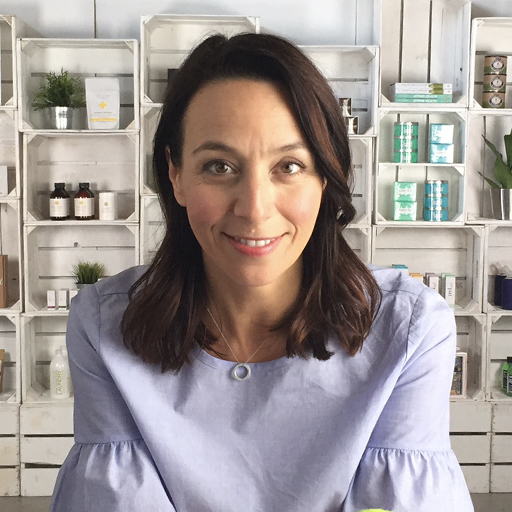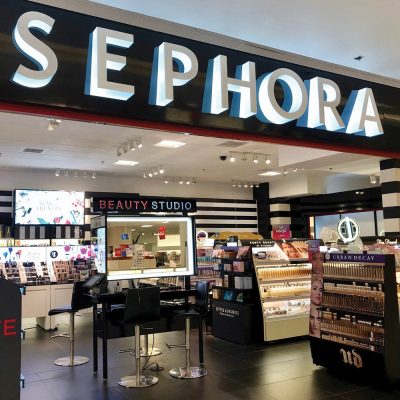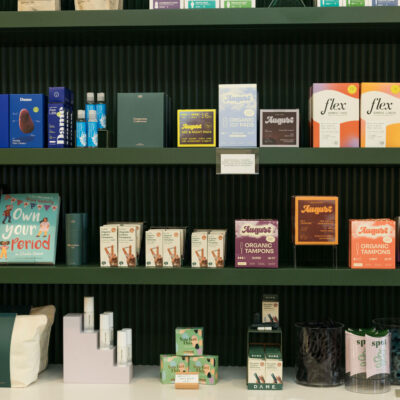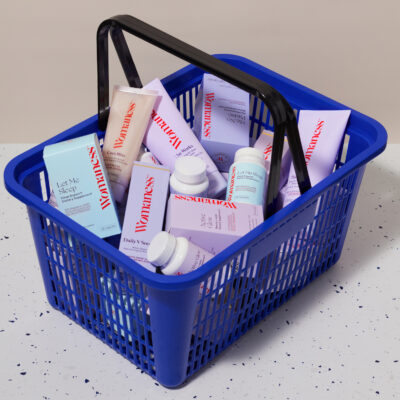
Livestream And Social Commerce Concept Bleu Beauty Launches With Investment From NYX Cosmetics Founder Toni Ko
Orca, a producer of shoppable content for brands the likes of E.l.f. Cosmetics, Estée Lauder, Farmacy and KimChi Chic Beauty, is launching livestream and social commerce beauty e-tailer Bleu Beauty to replicate the interactivity of beauty shopping in physical stores on digital platforms such as TikTok and Amazon.
Established by media and entertainment entrepreneur Max Benator and former television executive Lauren Stevens in 2020, Orca has hired Elena Severin, a veteran of beauty retailers Fred Segal, Violet Grey and The Detox Market, where she was most recently director of brand partnerships, as VP to guide Bleu Beauty’s assortment. The concept, which has secured an undisclosed amount of investment from NYX Cosmetics and Bespoke Beauty Brands founder Toni Ko, is starting with nine brands, including Kinfield, Mama Sol, Kimiko Beauty, Neen, TOK Beauty, Mount Lai and Mei Apothecary.
“Bleu Beauty is our flag planted in the beauty space to sell incredibly curated products that Elena helps bring in the door with great talent,” says Benator. “When you’re shopping, you get to experience the product on video or interact in real time and ask your questions of our host as if you were shopping in real life. It’s a retail experience, it just happens to be on your phone or on your computer.”
In a statement, Ko says, “Bleu Beauty is a game changer for the retail beauty landscape. As more audiences continue to embrace social commerce, it will be important for brands to think about destinations like this as a key part of their retail strategy. Shoppable entertainment, especially on social platforms, is the next evolution in retail, and Bleu Beauty makes it easy for any brand to take this next step.”

Recruiting brands hasn’t been a tough task for Severin, who explains they’re eager for outlets outside of conventional beauty retailers, which have been slashing their brand rosters of late. Bleu Beauty has a wholesale relationship with brands and purchases inventory. As it gets off the ground, Severin says, “We’re not buying hundreds of units at this point. We’re buying modest quantities to test and learn.”
The visual aspect of color cosmetics makes it a go-to beauty subcategory for Bleu Beauty, and Severin identifies skincare as another subcategory it plans to dive deeper into along with beauty tools and wellness. Although Bleu Beauty may excite consumers with giveaways during livestreams, Severin suggests discounting isn’t central to its proposition.
“People aren’t looking for the best deal, they’re looking for the best price that’s out there,” she says. “I think that customers are absolutely willing to spend on quality, they just want to know that they’re not being undersold.”
A phenomenon in Asia, livestream commerce hasn’t taken off in the U.S., at least not yet. Last year, it accounted for less than 5% of e-commerce sales in the country, according to global management consultancy Kearney. Investment has poured into livestream beauty startups without much to show for it. For example, the livestream startup Supergreat raised $29 million in funding before shutting down last year.
Still, some beauty investors and entrepreneurs are optimistic livestream and social commerce could gain steam. Bleu Beauty highlights a projection from market research firm Grand View Research approximating the market size of U.S. social commerce in 2023 at $109.73 billion and forecasting it will accelerate 29.2% by 2030.
“It’s a retail experience, it just happens to be on your phone or on your computer.”
TikTok Shop’s U.S. arrival in 2023 has certainly acclimated many consumers to social commerce. It has roughly 150 million American users, and Benator argues its presence is attracting other major technology and e-commerce players into the social commerce arena despite President Joe Biden signing a bill to force Chinese parent company ByteDance to sell TikTok to American owners or face a ban.
TikTok expects strong U.S. sales through TikTok Shop, and Benator describes Orca as a top seller on it. Orca handles categories beyond beauty like apparel and beverages, but beauty is its biggest category. In December last year, market research firm NielsenIQ pegged TikTok Shop as the fourteenth largest health and beauty e-commerce retailer in the U.S. and reported 81% of its sales were from health and beauty.
As The New York Times mentions in an inside look at a studio creating content for TikTok, TikTok Shop is projected to reach $17.5 billion in merchandise sales by the end of the year. Still, that’s only a fraction of the $200 billion Douyin, the Chinese version of TikTok, generates for online shopping in China and an even smaller fraction of Amazon’s estimated global merchandise value of estimated $750 million in 2023.
Benator’s confidence in livestream and social commerce stems in part from the sales metrics Orca is seeing. The company discloses that one of its beauty brand client’s average order value was $24.10 via livestream and social commerce, up nearly 31% from the $18.40 AOV on its e-commerce website. A second beauty brand registered an average 4.31% conversion-to-purchase via Orca livestreams, besting the Shopify conversion-to-purchase average of 1.4% by 207%.
From a brand perspective, Benator points out a drawback of traditional home shopping has been its appointment nature. Distinct from brick-and-mortar retail partnerships, brands have had to spend to promote the specific time they’re going live. The vision for Bleu Beauty is to be so pervasive as to not require appointment viewing. While it’s beginning with Amazon and TikTok as well as its own site, it can pop up on virtually any platform.

At Orca, Benator says, “With KimChi Chic Beauty, we stream six hours a day six days a week. It is effectively retail shop hours. We have passersby who just flow in. They just are messing around on TikTok. We see them ask a question like, ‘What shade would be right for me?’ We run them through the process, and they convert to purchase.”
Orca’s core consumer targets are women aged 25 to 44 years old. It produces about 400 shoppable videos monthly and has 100 employees in 8,000 square feet of space in Los Angeles that houses nine studios dedicated to brands for livestream and social commerce filming. It’s moving soon to 12,000 square feet. Orca has 40 on-camera hosts and an affiliate network of more than 10,000 creators. At the moment, Bleu Beauty’s team contains three people.
Benator declines to divulge Orca’s exact sales or the sum of money it’s committed to building Bleu Beauty, but says sales are growing “triple digits pretty consistently,” and the company has allotted considerable funding to Bleu Beauty. It hasn’t taken on venture capital, per Benator.
“Our mission is to establish Bleu Beauty as a meaningful seller through live and social e-commerce in this country, and we’re prepared to take the time necessary to do that properly,” he says. “Our focus today is on making the investments to properly support Bleu Beauty and its growth and then following that we’ll be focusing on sales.”





Leave a Reply
You must be logged in to post a comment.